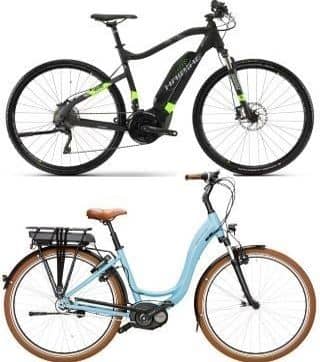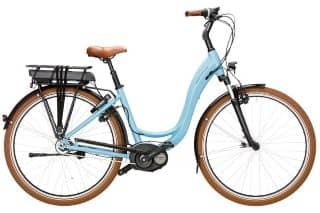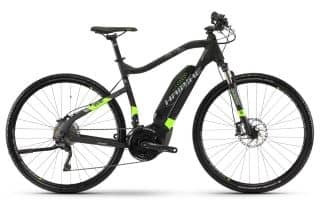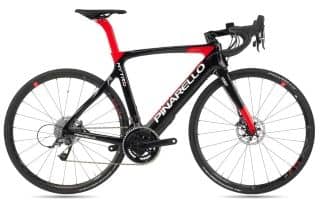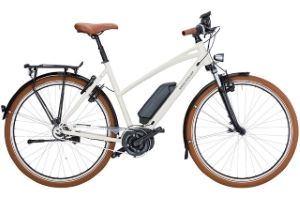- Electric bike selection criteria
- E-bike geometry: city, leisure, both?
- Price: 1500 to 3000 € for a quality e-bike
- Battery and capacity: which model to choose for optimal autonomy?
- Engine and assistance
- Other selection criteria for an electric bike
- Summary table
- Where to buy an e-bike?
- Sport Passion recommends
Electric bike selection criteria
Which electric bike to choose? This is a difficult question given the large number of models available on the market and the number of criteria to take into account. There are EABs for all tastes and uses at all prices. However, there is no question of choosing the first bike, for example according to its quality, its price (high or not) or just its look! The best electric-assisted bicycle in the world may not be suitable for the use you want to make of it.
Everything depends first of all on the type of intended use (hiking, sport, commuting, shopping), the frequency of use (occasional or regular or even intensive), but also on the number of kilometres to be covered per day, the distance of the longest journeys envisaged, the difficulty of the terrain. The geometry of the bike, the battery, the engine and the type of assistance must be chosen according to these choices. Accessories are also important. Finally, the budget will, of course, have to be weighed up.
We review and explain below the various criteria to be taken into account.
Read also: the electric bike: why it arouses so much interest.
E-bike geometry: city, leisure, both?
There are different types of electric bikes: city bikes (urban), hiking bikes, mixed bikes (urban and hiking), racing bikes. The VAE is also available in a foldable version, more practical for transport.
The right questions to ask when choosing your EAB
Your electric bicycle must meet the use you plan to make of it: a bicycle to go to work every day, to walk, on the road or in the forest, to do sports or simply to go to town (work, shopping, etc.).
Will you use it every day or occasionally? Will you travel by train, car, bus or plane? Do you plan to use it over long distances? Do you plan to do it on the road only? Would you like to be able to use it in steep, even mountainous passages? Do you plan to spend with it, i.e. to use the assistance at least or not at all?
The answers to these questions are important to move to the next step: the choice of type of bike or its geometry (city bike, mountain bike, mountain bike, racing bike). Some bikes are designed for road use only and will not be suitable for use in the forest, even occasionally. Others, on the contrary, will suit well for off-road but little for the city. Some EABs are foldable, a practical side if you like to take your bike on a trip in the trunk of a car. Some bikes are more comfortable than others for short trips but tiring on longer trips.
What geometry to choose for your e-bike?
Here is a table to help you choose the bike model adapted to your needs. Below you will find a description of each type of bike.
| Activity | Recommended geometry |
|---|---|
| City, races, short rides (30 mn max), comfort, occasional use, women wearing a skirt, men in straight or "Dutch" | Straight bike or "Dutch" |
| Biking and long sports outings (> 30 mn), city, races | VTC |
| Home-to-work journeys (< 30 mn) | Straight bike, VTC |
| Leisure, sports rides (moderate and on roads), races > 30 mn | VTC |
| Sports on rough or mountainous terrain | ATV |
| Long road outings (flat or mountain), performance | Race bike |
The bike for the city: straight or "Dutch" : pleasant and comfortable for short journeys
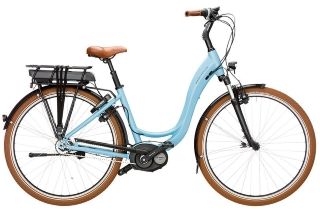
The bike for the city is a "Dutch" straight bike designed for comfort above all: comfortable seat, high handlebars close together to pedal straight back easy straddle (which makes it very practical when wearing a skirt or suit), good visibility, designed to receive accessories for comfort (for example: luggage racks, baskets, suspensions, mirrors, chain guard, mudguard, crutch, integrated anti-theft).
It is a pleasant bike to use for short trips (less than 30 minutes). For longer trips, it is a little tiring. In addition, the position offered on the bicycle does not allow the use of all the propelling muscles. In addition, its transmission system is less efficient than that of other bicycles.
It is ideal for people looking for comfort on their bike and whose goal is to make short trips on the road (shopping, short ride, home-work trips, Sunday outings).
The bike for the city is offered with a high frame (horizontal or high crossbar) for men and low frame for women.
Straight back, comfortable seating, easy step, good visibility, ideal for the elderly, women in skirts or dresses (low frame), men in suits or anyone looking for comfort without performance.
Fatiguing on long journeys, not very effective, does not work all the propelling muscles.
The electric VTC (mountain bike)
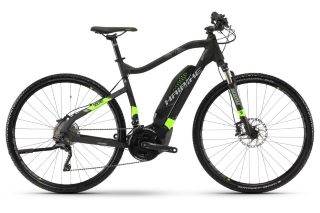
The electric Vélo Tout Chemin (VTC) is a multi-purpose bike designed for the city and sports and leisure outings on roads and paths. It offers a saddle more ergonomic but also harder than the straight bike. It has a more powerful braking system. The position on this bike is a little tilted, therefore more aerodynamic. Some models can be fitted with accessories such as luggage racks, saddlebags, mirrors and anti-theft devices. It is more suitable for hills than the city bike.
The electric VTC is a good compromise between the city bike and the mountain bike. It has been designed to be practical while offering better pedaling efficiency, better aerodynamics and greater comfort than the city bike for long journeys (more than 30 minutes). This bike is ideal for short trips in the city or for longer outings, on the road or on the roads.
It is more efficient and more versatile than the straight bike. It is a good compromise between city bike and mountain bike. Ideal for the city and leisure walks.
It can be a little too sporty for people who are not used to cycling or who are used to city cycling (leaning position, harder saddle). The frame of the VTCs does not always allow certain accessories to be added (luggage racks for example).
The mountain bike (mountain bike) or electric trekking bike
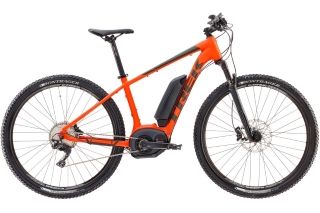
The electric ATV is an assisted ATV. Its wide and notched tires are designed to ride on any terrain. However, it is less practical on the road. It is suitable for athletes who wish to have assistance during their sport. It gives a big boost on steep slopes but also, for the less trained, on forest roads. Riding becomes a real pleasure for those who love mountain biking but don't want or don't have the strength to make big pedaling efforts.
It offers great comfort in difficult passages and allows more freedom than a classic mountain bike.
The weight of the bike if you do not want to use the assistance and the higher price to pay if you want to have a good range and a powerful engine.
The electric racing bike
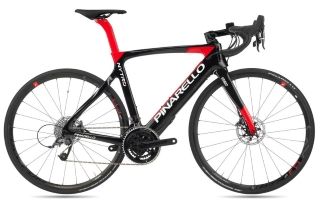
The electric racing bike is a bike designed for long distances, mountains, difficult passes. It is quite possible, thanks to the assistance, of climb Mont Ventoux with a minimum of training. The mountain and the coasts thus become accessible to all or almost !
The electric racing bike has thin tires and its weight is light compared to other electric bikes. The athlete must be able to use his bike without assistance and if it weighs too heavy, it is likely to be left at the back of the garage! The best electric road bikes weigh 9 to 13 kg thanks to the use of a light frame (carbon for example) and an ultra-light motor and battery (4 to 6 kg). They obviously cost more.
The assistance offers a precious help in the climbs a little too steep even inaccessible for some. It allows the less sporty to cycle and the sporty to go longer distances and climb passes with less training.
The weight of the bike can really be a concern since you will have to spend a lot more energy on the slopes when the assistance is not used. We recommend investing in a bike that is as light as possible.
Speed bike
The speed bike (speed bike or fast bike) is an electric bike like the others but not flanged. It can reach 45 km/h. The French regulations consider it as a moped and thus impose the rules specific to motorized vehicles, in particular the compulsory registration, the wearing of a helmet and the grey card or the ban on driving on cycle paths.
Its speed makes it possible to travel greater distances, to save time in the journeys, while remaining an economic and non-polluting solution compared to a scooter.
It has more constraints and a higher cost due to legislation.
The size of the frame
The frame should be chosen according to your size and crotch. Each bike manufacturer offers an abacus specific to its brand. If your size is not in the norm (large crotch compared to the total size or vice versa), ask your dealer to find a bike adapted to your morphology. The ideal is of course to be able to test it before buying it.
A folding electric bicycle for easier transport and storage
There are folding EABs. They take up less space and can therefore be more easily stored in an apartment or garage or transported in the boot of a car. They are generally lighter.
The Dutch bike is perfect for non-sporting use, short trips or rides or when you are dressed for city riding (skirt, suit) or are not used to cycling. For a more sporting use (in addition to the city), on roads or paths, a VTC will be more appropriate because more versatile. The mountain bike and the racing bike are to be reserved for sports people who need assistance to go further or higher.
Price: 1500 to 3000 € for a quality e-bike
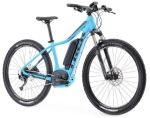
Incontournables sur internet, ces sites marchands offrent un service efficace et sérieux :
- Cdiscount propose des VAE à petit prix.
- Amazon : livraison généralement gratuite.
- Go-Sport : livraison généralement gratuite en magasin.
Profitez sur ces sites de nos codes promos.
Price is an important criterion when choosing your electric bicycle. The quality of the frame, transmission, braking system, bearings, type of assistance, accessories, engine, battery, bike weight and range depend on it.
If your budget allows it, invest at least 1500 €. This is the minimum price to pay for a quality bike. This can go much higher depending on the type of bike, the comfort and performance desired and of course the weight of the bike. We strongly recommend that you put the price in your VAE for greater durability, reduced maintenance costs and especially not to discourage you from doing so.
- Entry-level (less than 800 €) : The manufacturer had to make the most of the quality of the bike and its components to be able to offer such a price: type and capacity of battery, engine, assistance, materials. This type of bike is suitable for small budgets (if not better) and for occasional use. Beware of maintenance costs that can be more expensive than on a quality bike (repairs, parts that break, limited battery life, more frequent breakdowns) and bike performance that can be disappointing (range, power). Your electric bicycle must work well or you will quickly become discouraged and will no longer use it.
- Mid-range (800 to 3000 €) : this is the most widespread range. In 2017, the average price spent by households for EAV was 1564 €. This range includes all types of bicycles, from city bicycles to racing bicycles, including electric mountain bikes and mountain bikes. For a well equipped quality bike (progressive assistance engine, disc brakes, good battery capacity, powerful lighting, etc.), plan 1500 € at least, more for an ATV or a road bike.
- Top of the range (3000 to 6000 €) : in this category are speed bikes and reliable electric bikes designed to last and bring great satisfaction.
- Very high-end (over 6000 €) : this range is aimed at demanding people or those looking for performance. It offers the best electric racing bikes on the market including a miniaturized engine, a light battery and quality and light equipment (carbon or aluminium frame, brand braking system, etc.).
| Product Range | Price | Quality |
|---|---|---|
| Entry-level Range | < 800 € | Mediocre |
| Middle Range | 800 to 3000 € | Good from 1500 € |
| Top of the range | 3000 to 6000 € | Excellent |
| Very top of the range | More than 6000 € | Focus on weight and/or power |
If your budget allows it, invest at least 1500 € in your electric bike for a correct quality (comfort, life span and maintenance costs)
Battery and capacity: which model to choose for optimal autonomy?
The battery is an essential element to take into account when choosing an electric bicycle. The range of the bicycle (the number of kilometres covered with assistance) depends on it. Its cost, weight and life are also parameters to be taken into consideration.
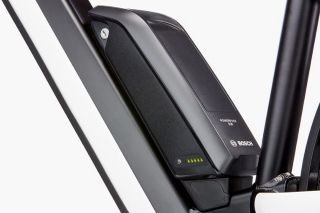
There are several battery technologies and different capacities. Depending on the use of the bike (occasional or frequent), the weight of the cyclist, the type of terrain (flat, with some hills or mountains) but also the budget available, it will be necessary to favour this or that type of battery.
The ideal is of course to opt for a battery of great capacity and recent technology but this one will be more expensive.
Each battery is characterized by:
- Its technology (lead, lithium, etc.)
- Its voltage (V) and capacity (Ah). The product of both (energy in Wh) is often put forward by manufacturers and gives an indication of the bike's range. We deal with this below.
The different types or technologies of batteries for electric bicycle
Batteries have continued to evolve over time with new technologies that have reduced battery size and weight while improving battery capacity. Current batteries are lighter, less polluting, have no memory effect (no need for the battery to be completely discharged to recharge) and offer a greater number of charging cycles than older models. On the other hand, they are more expensive.
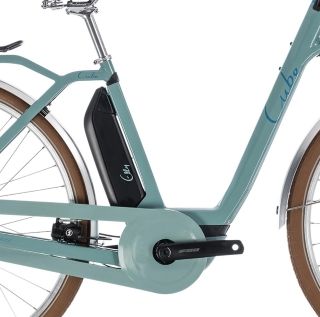
Today there are 4 types of batteries:
- Lead : they are cheap but heavy and sensitive to temperature variations. They discharge faster than other batteries. They have a short life (300 to 400 refills at most) and are polluting. They are now used on entry-level models, hence the heavier weight of this category of bicycles.
- Nickel-metal hydride (Ni-Mh) : these batteries have the advantage of being 2 times lighter than lead batteries but they are easily discharged. They also suffer the disadvantage of the memory effect: to function optimally, the battery must be completely discharged before recharging. Otherwise, the battery will only return part of its capacity. These batteries can be recharged about 500 times.
- Lithium-Ion (Li-Ion) : like Ni-Mh batteries, they are 2 times lighter than lead batteries but they have the advantage of having no memory effect and offer better performance. They can be recharged 600 to 1200 times. However, they are more expensive. These are the most commonly used batteries for EABs today.
- Lithium Polymer (LiPo) : these batteries combine the best of the 3 previous technologies. They are 5 times lighter than lead batteries (2.5 times less than Ni-Mh or Li-Ion batteries), have no memory effect, offer equivalent performance to Li-Ion batteries and allow between 600 and 1500 charging cycles. They are also used on electric bicycles.
| Type | Prices | Weight | Memory effect | Nb of refills |
|---|---|---|---|---|
| Lead | $ | + | Non | 300-400 |
| Ni-Mh | $$ | ++ | Yes | 500 |
| Li-Ion | $$$ | ++ | Non | 600-1200 |
| LiPo | $$$$ | ++++ | Non | 600-1500 |
If your budget allows it, prefer a LiPo model. It will be more expensive but also lighter than other batteries, without memory effect (therefore easier to use) and will offer an optimal lifetime. If you don't have a Li-Ion battery, go to a Li-Ion battery.
Battery voltage and capacity
EAB batteries have 2 important parameters:
- Capacity: expressed in Ampere-hours (Ah) or coulombs (1 Ah = 3600 C), it represents the quantity of electricity that a battery is capable of delivering in one hour. A 10 Ah battery can deliver 10 amps per hour or 5 amps for 2 hours. The larger the capacity, the longer the battery will last. For short journeys (less than 25 km), 8 Ah are sufficient. For longer journeys, use a higher capacity (10 Ah).
- Voltage: Expressed in Volts (V), the higher it is, the more power the engine will be able to deliver so climb difficult slopes. If you often ride on flat terrain with a few hills occasionally, a 24V battery will be sufficient. For mountains and coasts, prefer a 36 V battery.
The maximum energy that a battery can produce is calculated by the formula :
Thus, a battery of 24 V and 10 Ah can deliver a maximum of 240 Wh. Such a battery can provide 240 W for 1 hour or 120 W for 2 hours.
Using the bike assistance to the maximum, knowing that the motor is clamped at 250 W, it will be possible to ride almost one hour (250 W). Using the 50% assistance, you will be able to travel double the distance before running out of battery power.
In practice, batteries are not 100% efficient but rather between 40 and 60%. Thus, the autonomy will be lower than the one calculated above.
- For use in town, on the flat with some hills and for trips of less than 25 km, a battery of 24 V and 7 or 8 Ah will be sufficient. A small capacity battery will also be lighter, especially on an entry-level bike (the batteries used are very heavy).
- For use on routes longer than 25 km and/or with slopes or for mountain sports outings, a battery of 36 V and 10 Ah or more will be preferable.
- The manufacturers do not always indicate these values but rather the energy capacity (in Wh) of the battery. The bigger it is, the more autonomous the bike is. The best bikes offer more than 400 Wh of autonomy.
| Use | Min. voltage | Min. capacity | Min. energy |
|---|---|---|---|
| Flat, distance of 25 km max | 24 V | 7-8 Ah | 170 wh |
| Distance > 25 km | 24 V | 10 Ah | 240 Wh |
| Coasts | 36 V | 10 Ah | 360 Wh |
| Mountain | 36 V | 10-16 Ah | 360 Wh |
| Intensive VTT | 36 V | 14-16 Ah | 500 Wh |
The autonomy of the EAB
The range of an electric bicycle is the number of kilometres that can be covered before the battery runs out. It can vary from 25 km to more than 150 km depending on various parameters, mainly:
- Battery capacity
- The combined weight of cyclist and bike
- The difficulty of the terrain (slope)
- The level of assistance used (100%, 50%, etc.)
Tyre pressure, transmission efficiency and surface type also influence the bike's range. You should also know that the battery loses capacity with time and the number of recharges. So plan wider than necessary.
The manufacturers often announce an autonomy on their product sheet but this value is to be taken with care. It corresponds to very particular conditions (average weight of a cyclist, driving on a flat, partial assistance, etc.). It is obvious that if you drive on mountainous roads, the autonomy will be much lower than if you drive on flat roads. Similarly, the use of the assistance will be decisive (the more the engine is used, the lower the autonomy). The range announced by the manufacturers remains however interesting to compare the electric bikes between them.
Take into account the capacity displayed by the manufacturer, expressed in Wh (power that the battery can produce per hour) rather than the range announced in kilometres. The higher this value, the greater the bike's range. A long range is all the more important if you plan to cycle long distances (30 km and more) or make trips with hills.
The battery on the frame or luggage rack
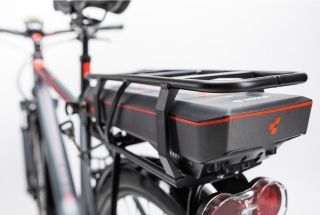
Depending on the bike, the battery may be on the bike frame (under the saddle or on the slash) or on the rack. For very heavy batteries, the balance of the bike will be better if the battery is placed under the saddle. But for most bikes, it doesn't really matter. It's more a question of aesthetics.
Preferably a removable battery
The battery is an expensive and heavy component. It represents 30 to 50% of the price of the bicycle. It should preferably be removable so that it can be removed when the bike is parked outside. An EAB without a battery is of less interest to a potential thief. It will also make it easier to transport the bike and recharge the battery. Note also that if you travel by plane with your electric bike, you will not be able to carry the battery. The transport of this type of battery is indeed prohibited in hold and hand luggage.
Battery charging time
Depending on the technology, the EAB battery recharges between 3 and 7 hours. It takes 3 to 4 hours for new batteries. This parameter should be taken into account if you use your bike frequently or if you intend to recharge it in town.
Some bikes have a device that recharges the battery on descents or during braking. This makes it possible to extend the autonomy a little bit. This system is still expensive and inefficient today. It is rarely proposed.
Whenever possible, choose a bike with a removable battery, large capacity (400 Wh or more) and rechargeable in less than 4 hours
Engine and assistance
The motor torque: it determines the power of the electric assistance
Torque is the force that the motor is capable of delivering. It can vary from 15 to more than 85 Nm (Newton meter). The higher it is, the more the bike will be able to climb difficult climbs or support the weight of the cyclist on the slopes. This value is therefore very important when choosing an EAB.
For mountain or coastal routes, opt for a motor with the highest possible torque, at least 70 Nm. If you don't, you'll have to pedal more in the hills! The weight of the cyclist should also be taken into account: the higher the weight, the more effort the engine has to put in. For the dish, 15 Nm is sufficient but we recommend at least 30 Nm for more comfort.
Motor in the wheel or in the crankset. All or nothing" or proportional assistance.
In a VAE, the motor (electric assistance) is housed in the hub of one of the wheels of the bicycle or in the crankset. On the other hand, the electric assistance can be in"all or nothing" mode (the engine runs at fixed power or is switched off) or progressive (proportional to the cyclist's effort).
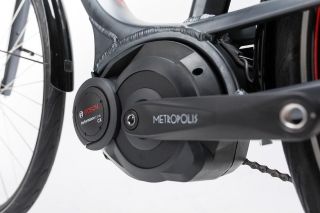
- All or nothing assistance: the motor has 2 possible states: either it is switched on at constant power or it is switched off. There is no in-between. A sensor simply detects whether or not the cyclist is pedalling (or braking) and triggers the assistance function. You can adjust the assistance level (power) from the console, but this power remains fixed regardless of the difficulty encountered in the field. This type of assistance equipped all the first VAEs. The engine is often placed in the hub of the rear wheel (preferable) or front (rarer today, less stability of the bike except in town). This type of assistance gives the impression that someone is pushing the bike. It can, however, provide a feeling of a gap between the pedal and the assistance, and bumps can be felt when the engine starts. This system can make repairing a puncture more complicated. Less expensive than progressive assistance, it is generally offered on entry-level bikes and some mid-range bikes.
- Progressive or proportional assistance: it adjusts according to the cyclist's effort. The greater the difficulty, the more assistance increases. Difficulty is assessed by sensors that measure pedal pressure, bike speed and pedalling cadence. In this type of assistance, the motor is usually placed in the crankset. Progressive assistance is available on high-end bikes and some mid-range bikes. It offers unequalled comfort and pedalling sensations similar to those of a classic bicycle.
| Assistance | Cost | Comfort | Stability | Position |
|---|---|---|---|---|
| All or nothing | $ | + | + | Hub |
| Progressive | $$$ | +++ | +++ | Groove crankset |
If your budget allows it, opt for a motor located in the crankset and a progressive assistance. This system will bring you great pedaling comfort and stability. Avoid assisted bicycles in the front wheel, they are less stable in curves.
Assistance: levels and start-up help
Bikes generally offer 3 to 9 levels of support. The control is done from the console fixed on the handlebar. The cyclist selects the level of assistance according to the difficulty of the terrain or the efforts he is prepared to make.
Some bicycles offer assistance when starting: the engine can be activated, even without pedalling, up to a maximum speed of 6 km/h, for starts at traffic lights, on hills or to accompany the bike (storage in the garage, pedestrian lane, etc.).
The more assistance levels, the better: the control granularity will be finer and the battery use optimal. Starting assistance is also very practical in town (lights, hill starts) and for storing or pushing the bike. We recommend it.
Other selection criteria for an electric bike
The weight of the bike
An EAB weighs between 9 and 30 kg (20 kg on average). The weight of the engine and battery must be added to the weight of the bike (at least 5 kg on top of the range racing bikes or mountain bikes to more than 20 kg on entry-level models, the cheap batteries weighing very heavy !...).
In theory, the weight of the bike is not a problem since the electric assistance compensates for it. That said, the heavier the bike, the more difficult it will be to climb the hill (you will have to pedal harder!) unless the engine has a good torque. A heavy bike will also consume more battery. It will be more difficult to handle (stairs, narrow corridors), to store, to transport (train, bus, car...). Finally, in case of dry battery failure, you will need to be well trained and make a lot of effort to be able to drive, especially on the hills, and bring the device home or to the next available outlet!
The lightest electric bikes are also the most expensive (engine, battery and light frames have a price!). This is to be weighed in the balance!
Choose a bike that is as light as possible in order to optimize its autonomy and to be able to ride even when the battery is empty. It will also make it easier to transport and store. If your budget is limited, favour other accessories (battery, engine, speeds, braking system in particular).
Speeds: integrated or with derailleur
There are two speed management systems on electric bicycles: the derailleur system and the integrated speed system.
- The derailleur system: the gear change is carried out via a derailleur that moves the chain from one chainring or sprocket to the other. This system, very common on most bikes today, has some drawbacks. Shifting gears can only be done by pedalling and is made more difficult when starting, especially on hills. The components (sprockets, chainring, chain) wear faster than with a system with integrated speeds, especially on electric bicycles (30% more wear due to the chain being driven by the motor). On the other hand, this system is less expensive, lighter, more responsive and allows more speeds. It is more suitable for racing bikes and mountain bikes where gear changes must be quick and must be able to be done while pedaling.
- Integrated gears: In this system, the gear change is carried out by means of gears located in the hub of the wheel. The chain, fixed to a single wheel sprocket and a single bottom bracket, never changes position. Gears can be changed when stationary, simplifying hill starts. This system is more robust and less subject to wear than the derailleur system. The moving parts, enclosed in a generally waterproof housing, are protected from the elements and dust. The chain is always tight and derailments are impossible. Maintenance is reduced. The disadvantages of this system is that you should not pedal when changing gears, which can be disturbing. The number of speeds is also lower than the derailleur system and the higher price. In case of technical problems, the repair is delicate and can only be done by an expert.
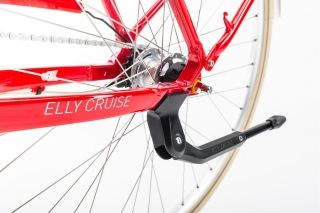
Choose a bike with integrated speeds for the city, leisure rides and commuting. On mountain bikes and racing bikes, where weight, number of speeds and responsiveness are important criteria, a derailleur will be more appropriate.
The console or display
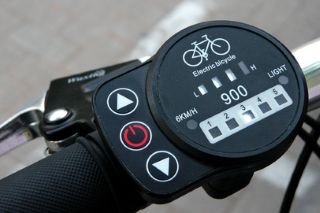
Fixed to the handlebar, the console (or display), allows you to choose the level of electric assistance and, on certain bikes, to start the engine without pedaling (for hill starts or to accompany the bike while walking).
It can also display some data such as assistance level, battery level, speed, distance covered.
A removable console will be more practical than if it is fixed. You can take it with you when you park your bike.
The frame
Depending on the type of bike and the use, steel, aluminium and carbon frames are available.
- The steel frame: Fashionable thanks to techniques allowing to obtain light frames, it is robust while being more flexible than aluminium. It is shock resistant. It is suitable for hiking, trekking, mountain biking.
- The aluminium frame: it is the most widespread. It is light and does not rust. However, it is rigid (more than steel) and therefore less resistant to shocks than steel frames.
- The carbon frame: more expensive than other materials, it is shock resistant, light but sometimes a little too flexible. It is offered on high-performance racing bikes where the weight of the bike is an important criterion.
Brakes: disc or pad brakes
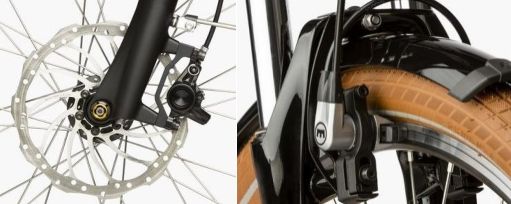
As with conventional bikes, the VAE's brakes can be pad or disc brakes.
- Brakes with brake pads: If the brake pad is in good condition and of good quality, this type of brake is effective and quiet. Maintenance is easy.
- Disc brakes: They are effective even in wet weather, require little maintenance and wear slowly. They are well adapted to the city, less to the ATV because they are sensitive to overheating.
The saddle
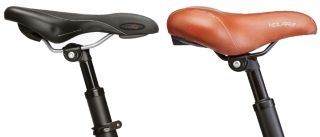
It can be more or less comfortable and ergonomic. It depends mainly on the model of bike (city, VTC, VTT, race). City bikes generally have a wide, comfortable saddle, suitable for short journeys. Mountain bikes and racing bikes have a thinner, lighter and ergonomic saddle designed to limit friction and inconvenience the athlete and pedaling as little as possible. For greater comfort on mountain bikes or electric road bikes, opt for a saddle with gel that will better absorb shocks.
Suspensions. VTC and ATV with suspended frame.
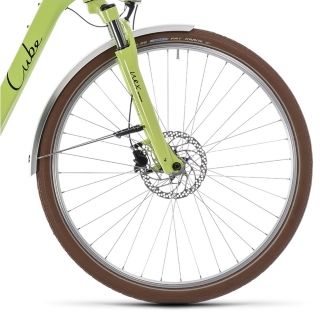
The VAE can be equipped with suspensions. They absorb shocks and make driving more comfortable. This can be interesting if your regular trips are made on the road.
On some ATVs and ATVs, the frame can be suspended. A suspended bicycle (or a bicycle with a suspended frame) is a bicycle whose rear wheel is equipped with suspensions to absorb uneven ground and bring greater comfort to the cyclist.
Other accessories
Before you buy your electric bike, identify the accessories you will need now or in the future. Will you need to carry any things (shopping, bag) or a child? In this case, it will be necessary to provide a luggage rack and perhaps bags. Will you use your EAB in all weathers? Mudguards and good lighting are welcome. Will you need to park it on the street, will you have to protect it? A crutch and an anti-theft device will probably be useful.
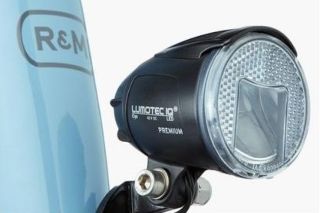
Depending on your needs, find out what accessories come with the bike and optional accessories. Can they be installed on this bike?
More and more accessories and gadgets are offered by retailers. Find out what's available for optimal comfort on your bike.
Summary table
Here is a summary of the main criteria for choosing an electric bicycle and our recommendations according to the intended use. Not all of the criteria listed above are included in this table.
| Features | Recommendation |
|---|---|
| Bicycle geometry | Straight or Dutch bicycle city, shopping, home-work journeys, comfort, practical for women in skirts or men in suits VTC : multi-purpose, city and work, walks on paths and roads, moderate sports outings. Mountain biking: sports outings, off-road, mountain and forest, hiking and trekking racing bike: long road outings, sport and performance, mountain Speed-bike : sports outings and very long trips. Requires registration, insurance, car registration, helmet. |
| Price | Entry-level (less than 800 €) minimum quality, heavy bike, low range, higher maintenance cost, minimum comfort. To be reserved for small budgets, children, city/shopping Mid-range (800 to 3000 €) majority of VAEs. 1500 € minimum for a quality bike. Battery and engine (weight, power, quality) depend on the price paid (3000 to 6000 €): reliable and comfortable, high quality bikes. This is the minimum to pay for quality mountain bikes and racing bikes and for speed-bikes. Very high-end (over 6000 €) for performance, especially for mountain bikes and racing bikes. |
| Battery | Lead : economic but very heavy (2.5 to 5 times more than other batteries), polluting, short life. Used on cheap bicycles. Ni-Mh : price and intermediate weight, suffers from the memory effect Li-Ion : price and intermediate weight, no memory effect, very common, efficient, good compromise LiPo : Light (5 times lighter than lead), efficient, long life but expensive. Ideal now. Opt preferably for a LiPo battery. Preferably a removable battery (easy recharge, protection of the bike) |
| Autonomy and battery | Privilege a bike with long autonomy if possible.City, races, short trips: 150 Wh, 24V, 7-8 Ah are enough Tracks with slopes, heavy cyclist weight : battery of 36 V Long trips : 14 Ah or more preferably Mountain and coasts : 36 V Large autonomy : 400 Wh minimum |
| Motor torque | From 15 Nm to more than 85 Nm. The bigger the bike, the easier it will be to climb hills. For sports outings, mountain biking, steep climbs, passes: 70 Nm minimum City, flat : 30 Nm is enough |
| Assistance type | We recommend a progressive assistance in the crankset for optimal comfort. Otherwise, an "all or nothing" assistance in the hub will suffice for the city and short trips or for an occasional use. A starting aid is an additional comfort. |
| Weight of the bike | Privilege a light bike if possible to be able to pedal when the battery is empty. 20 kg for a city bike, 10 to 13 kg for a racing bike. If the budget does not allow it, avoid very heavy bikes and use your budget for other accessories and parts (battery, type of assistance in particular). |
| Speeds | Preferably integrated on the city bike, the VTC and the VTT used for the ballads. A derailleur for mountain bikes used for sports outings and for racing bikes. |
| Frame | Aluminium or steel are very well suited in general. Steel is stronger and more flexible. For performance, weight and strength, a carbon frame provided you test it if you are not used to it. |
| Brakes | Disc preference except on the ATV used for extreme outings. |
| Accessories | Verify everything you need according to the intended use (shopping, transporting a child, going out in all weathers, parking outside, use at night, etc.) and that missing accessories can be installed on the bike if necessary (luggage rack, baskets, mudguards, lighting, crutch, anti-theft, etc.) |
Where to buy an e-bike?
More and more sports shops offer electric bikes. Sales grow each year with an explosion in 2017 (+90%). Take advantage, as long as it is still possible, of the state aids or even of your commune.
We propose the following partner brands which offer, for some, coupons with our site :
![]() Lepape offers quality devices and regular promotions. Free delivery from 90 € purchase. View site
Lepape offers quality devices and regular promotions. Free delivery from 90 € purchase. View site
![]() Go-Sport offers electric bikes of the brand or via its market place. View site
Go-Sport offers electric bikes of the brand or via its market place. View site
![]() Amazon offers bikes at all prices. Delivery often offered View site
Amazon offers bikes at all prices. Delivery often offered View site
Sport Passion recommends
Vélo de ville RIESE & MULLER SWING NUVINCI
Confortable et joli, pour la ville et le travail, facile à enjamber et pratique quand on porte un costume ou une robe, ce vélo électrique au look rétro est maniable, dispose d'une selle rembourrée et d'un équipement de qualité. Cadre alu. Autonomie 90 km. Recharge en 3h30. 4 modes d'assistance et aide au démarrage. Moteur 500 W. 26 kg. !
1500 €
VTT HAIBIKE SDURO CROSS 6.0
Léger et confortable, ce VTT électrique est d'une grande puissance grâce à un moteur Yamaha de qualité. Cadre droit pour les hommes (existe en version avec cadre bas pour les femmes), freins à disques hydrauliques, moteur 500 W. 5 modes d'assistance. 2 x 10 vitesses. Recharge en 4h. 21,5 kg. !
1800 €
Vélo de route PINARELLO NYTRO FORCE DISC
Nouveauté, ce vélo de grande qualité (savoir unique de la marque italienne), stable, précis, confortable est également léger (13 kg !) grâce à son cadre carbone et un moteur et batteries ultralégers (4,7 kg !). Autonomie de 1400 m de dénivelé positif. 2 plateaux et 11 vitesses, freins à disques hydrauliques. Un vélo exceptionnel.. !
2200 €
These articles may also interest you
The electric assist bike (EAB): why it arouses so much interest?
Les 7 meilleurs sports pour perdre des graisses et du poids
Le rameur : un appareil de fitness aux bienfaits multiples
Photo credits : Fotolia.com

